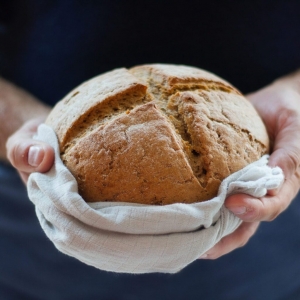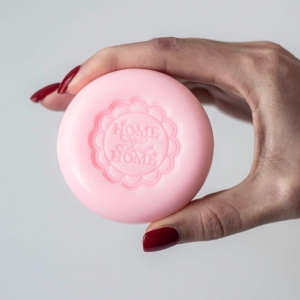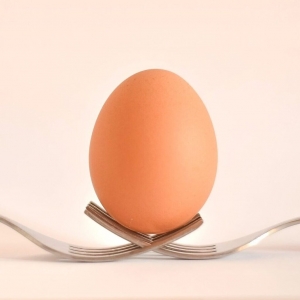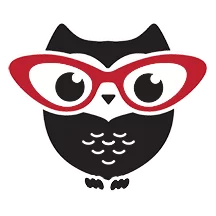All Czech nouns have a grammatical gender. There are three genders (masculine, feminine, neutral). Although there is no direct connection with the English, there are certain rules which help to memorise the gender.
It can be understood like this:
- Waiter is used for men
- Waitress is used for women
- Waiting staff is a neutral form
In Czech, it is crucial to know the gender of nouns as it may influence many other words in the sentence (adjectives, verbs, pronouns…).
It is logical when we describe people:

Masculine – HE

Feminine – SHE

Neutral – IT
However, in the Czech language, even inanimate objects have grammatical genders. In English, words such as cup, book and bicycle are always neutral – it. In Czech, they can be he, she or it.

Masculine – HE

Feminine – SHE

Neutral – IT
Unfortunately, there is not any logical explanation why words have certain gender. There are some basic rules based on which the gender can be recognised, however, there are many exceptions and the gender should be always learned together with the noun.
Masculine (ten)
The word indicating masculine gender is ten. It can be translated as the in English.
The dog is big. = Ten pes je velký.
The vast majority of masculine words end in a consonant.

dog

train

house

banana
There are also some -a ending words which are masculine. However, this is not as widespread as the previous category. In rare cases, there can be even -e or -í endings.

bread

colleague

tourist

tour guide
Feminine (ta)
The word indicating feminine gender is ta. It is again translated as the in English.
The cat is small.= Ta kočka je malá.
The most typical ending for feminine nouns is -a.

cat

shoe

school

hand
Words which end in -e and -ě are commonly feminine, too. Some feminine words can also end in a consonant, which means consonant-ending words are not exclusively masculine.

restaurant

fridge

road

office
Neutral (to)
The word indicating neutral gender is to. It also means the in English.
The car is slow. = To auto je pomalé.
Most neutral nouns end in -o.

car

window

T-shirt

soap
Another typical ending is -í. There are also words ending in -e and -ě, which means these are not solely feminine ending.

square

station

egg

tomato
During your studies, you will encounter endings being linked with an unusual gender. These irregularities were caused by natural language development over hundreds of years and have to be memorised.
Grammar Flashcards
Do not forget to take a look at our flashcards. They enable you to generate random words for certain grammar points.






















Ten Stůl, Ten Mobil,Ten Krystal, Ten džbán, ta židle, To okno, Ten počitač,… Read more »
ta židle, ten stůl, ta pohovka, to okno, ta knihovna, ta lampa, to… Read more »
ta židle, to okno, ta police, ten koberec, ten obraz, ten stolek, ten… Read more »
to pero, ta tužka, ta kniha, ten telefon/mobil, ten sešit, ten stůl, ta… Read more »
Ten stůl, ta pohovka, to okno, to světlo, ta lampa, ta kytka, ten… Read more »
ta bota, to okno, ten postel, ta voda, ta holka, to pero, ten… Read more »
ta bota, to okno, ta láhev, to pero, ta dveře, ten koberek, ta… Read more »
Ta kniha, Ta tužka, ten pes, ta kočka, to auto, ten banan, ta… Read more »
ta kniha, to okno, ten závěs, ta kočka, ten pes, ten banán, to… Read more »
Ten stul, ta zidle, ta kuchyne, ten zed, ta lednice
My father who was Czech told me that most Greek and roman borrowings… Read more »
Ta Baluba, ten podnikatel, ta židle, ten stůl, ta lampa, ten závés, ta… Read more »
ta zidle, ta police, ta kocky, ta lampa, ten stul, ten stolek, ten… Read more »
To okno , ta knihovna, ten skříň, ta stůl , ta židle ,ta… Read more »
Ta rostlina, ten stůl, ta kniha, ten oblek, ta holka, ta kočka, ten… Read more »
ta skříňka, ta pohovka, to křeslo, ten police, ta knihovna, to světlo, ten… Read more »
1 ten počítač 2 ta tužka 3 to pero 4 ten pracovní stůl… Read more »
Ta pohovka, Ta lampa, Ta skříň Ten stůl, Ten pes, Ten telefon, Ten… Read more »
Ten pes, ta kocka, ten pocitac, to okno, ta pohovka, ten stul, ta… Read more »
Ta pohovka, to okno, to světlo, ta lampa, ta dekorace, ten koberec, ten… Read more »
ten stůl ta židle ta pohovka to křeslo to okno ta lampa to… Read more »
ten stůl, ten židle, ta lampa, ten žavěs, ta skřín, to světlo, ten… Read more »
ta Křižovatka, ten kůň, to vějce, to rajče, ta rukavice, ten sršeň, ten… Read more »
To okno, ta kytka, ten závěs, ta vaza, ta kniha, ta bota, to… Read more »
To pero, ta sklenice, ten talíř, ta vidlice, to pouzdro, ten svetr, ta… Read more »
ta kniha, ta bota, ta ruka, to okno, to tričko, ten pes, ten… Read more »
Ta lampa, ten stůl, ta sklenice, ten sešit, to pero, ten hrnek, ta… Read more »
ta lahév, ten hrnek, ten stúl, ta noviny (pl), to sluchátko, ta židle,… Read more »
Ten prací stůl, to světlo, dveře, to okno, to křeslo, ta skřiňka, ten… Read more »
Ta televize ( ž.) Ten stůl ( m. neživ.) Ta lampa ( ž.) To okno ( s.).… Read more »
ta pohovka, to okno, ta knihovna, ta kytka, ten obrázek, ten psací stůl,… Read more »
To pero, ten list, ten počitač, ta tužka, ten telefon, ta židle, ten… Read more »
ten stůl, ta ruka, ta židle, to světlo, ta pohovka, ta káva, to… Read more »
ten stůl, to počitač, ten hrnek, ta kniha, ta karta, ta míska, ten… Read more »
ten stůl, ta židle, ta skříň, to okno,to dveře, ta kniha, ten věšák,… Read more »
Ta pohovka, ta skříň, ta lampa, ten stůl, ta židle, to okno, ten… Read more »
To okno, ta židle, ta skříň, ten stůl, ten kufr, ten vařič, ta… Read more »
ten stolek, ta pohovka, to křeslo, to okno, ta knihovna, ta lampa, to… Read more »
ten pes, to okno, ta lednice, to tricko, ta ruka, ta bota, to… Read more »
To kolo, ten květiny, ta taška, ten motocycl, ten bankomat, ta hora, ten… Read more »
Ten mobil, ta kocka, ta kava, ten muz, ta zena, ta lampa, ta… Read more »
Ta kava, to kalendář, ta hodiny, ta židle, ten kelímek, ten pes, to… Read more »
Ta židle, ten stůl, ta lampa, ten véšák, ta dekorace, to okno, ten… Read more »
Ta Kniha, ta bota, to rajce, to pero, to vino, ten postel, ten… Read more »
Ta židle, ten stůl, ta skříňka, to okno, ta dveře, ta lampa, to… Read more »
ten medvidek, ta pohovka, to mydlo, to okno, ta lednice, ta bota, ten… Read more »
Ten pocitac, to svetlo, ta kniha, ta penezenka, ta kabelka, ten zapisnik, ta… Read more »
ta židle, to okno, to světlo, ta kytka, ten závěs, ten obrázek, ten… Read more »
ten stůl, ta židle, to okno, ta bota, ten pes, ta police, ta… Read more »
ta tužka; ten mobil, to okno, ta voda, ten dům, ra zěna, ten… Read more »